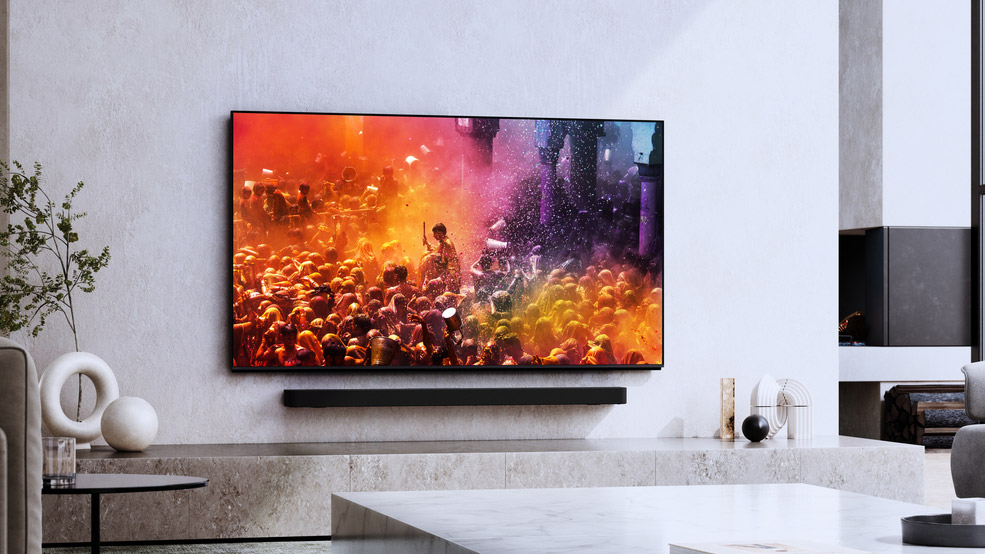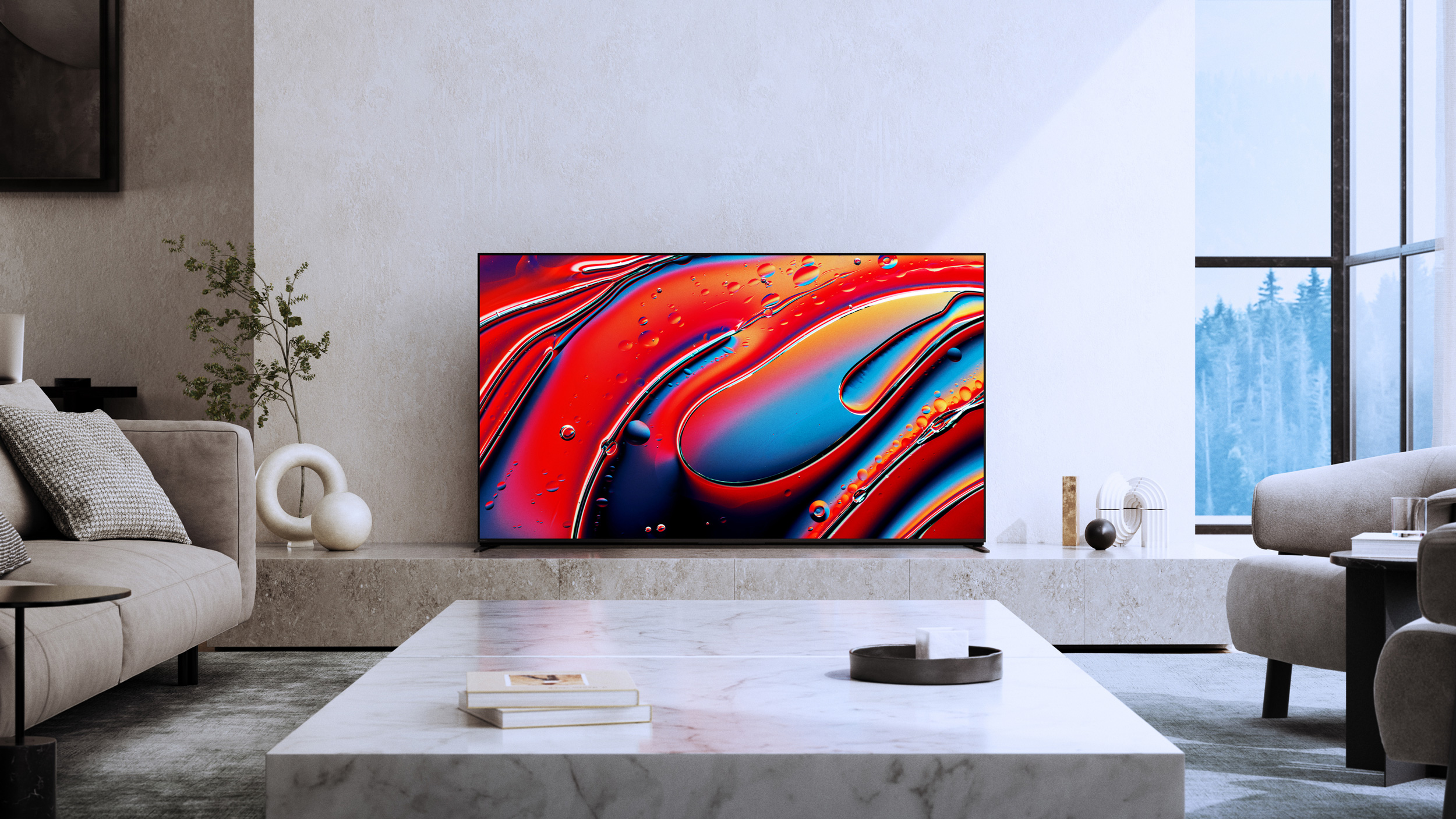Sony’s embraced Mini LED for its 2024 flagship TVs — here’s why you should too
Want a more authentic cinema experience at home? Sony's Bravia TV series will help you achieve it.

Sony is a TV manufacturer with innovation running through its proverbial veins. Whether it’s a proprietary processor capable of best-in-class upscaling, or a screen that literally vibrates to create sound, Sony can be relied upon for boundary-pushing quality.
That’s particularly the case for the Japanese tech giant’s latest screens, which have been completely revamped and rethought for 2024. While the Bravia 8 series continues Sony’s commitment to OLED, its all-new Bravia 7 and flagship Bravia 9 sets have adopted Mini LED technology, which Sony believes is the ultimate choice for movie fans looking to replicate the full cinematic experience at home.
Mini LED and OLED: what’s the difference?
No matter which Sony Bravia TV you opt for, you’re going to revel in exceptional picture quality. But if you want the pinnacle of Sony’s latest developments, the Mini LED-powered Bravia 9 is the perfect showcase.
Mini LED backlighting technology has long been considered an alternative to OLED because it exhibits similar contrast levels, yet can go much, much brighter. This is because each individual Mini LED is significantly smaller than a traditional LED, allowing for thousands of tiny backlights to be arranged on an LCD panel as opposed to a few hundred, which means greater control over the light they produce.
The end result when you’re watching at home is a combination of incredible brightness and detailed contrast that come together to create a more authentic cinema-like experience.

Sony’s Bravia 9 and Bravia 7 TVs get the added benefit of a new proprietary XR Backlight Master Drive backlighting system. This system allows for much finer control over the Mini LED backlight and the local dimming zones in either screen. The Bravia 9 employs 325% more dimming zones than the company’s own 2023 flagship screen, the X95L, while the Bravia 7 also sees an improvement, getting eight times more dimming zones than the X90L.
OLED TVs inherently deliver incredible contrast, as they use self-lighting pixels. When a pixel on an OLED is switched off, it emits no light and is therefore as true a black as you’ll find on a TV – in this regard, nothing else can compete. But the downside to OLED has always been its inability to reach retina-searing levels of brightness. While there certainly have been advancements in recent years, the fundamental differences in technology mean that brightness is one area where Mini LED has OLED thoroughly beat.
Furthermore, the Sony Bravia 9’s new backlight system reduces the gap between Mini LED and OLED in regard to black levels. The Bravia 9 range is capable of much finer control over which part of an image is lit, and by how much it’s lit, compared to other Mini LED sets. While it still won’t quite be ‘true black’ like you’ll find on the Sony Bravia 8, it comes remarkably close.
Colour & sound
In our own tests of the Sony Bravia 9, it recorded 95.8% of the P3 colour gamut, which is used for mastering 4K HDR movies. That puts the Bravia 9 on par with any premium OLED TV on the market when it comes to colour accuracy.

In terms of colour vibrance, Mini LED is far superior compared to traditional LED TV technology. This is because more specific areas of the screen can be lit up (or not) on a Mini LED screen, which results in brighter colours with greater contrast and depth. On an LED screen, colours will appear more flat, and there will be more instances of light blooming.
The Sony Bravia 9 introduces another first for a TV in the form of Acoustic Multi Audio+. This sees tweeters being integrated into the top and sides of the frame, front facing speaker drivers towards the bottom of the screen, and two bass drivers around the back. This results in a 2.2.2 Dolby Atmos speaker system that has a power output of 70W – much more powerful than what you’ll find on most other TVs.
Masters at work
The Sony Bravia 9 is capable of reaching even greater levels of brightness compared to other Mini LED TVs – including the Bravia 7 — thanks to a new XR Backlight Master Drive with High Peak Luminance (HPL) feature, coupled to the company’s famed XR Processor. The HPL feature is one of the main differentiators between the Bravia 7 and Bravia 9, and helps the latter reach a peak brightness of up to 4,000 nits — exponentially higher than most other sets currently available.
That higher peak luminance means the Bravia 9 can take advantage of movies mastered on Sony’s recently-released BVM-HX3110 professional mastering monitor. This incredible display is capable of reaching 4,000 nits peak brightness, which allows movie directors to also master their movies at this high level of brightness (Sony claims most movies are mastered at 1,000 nits, and that more movies will be mastered at this level in the coming years.) Our colleagues at What Hi-Fi? have seen this monitor in action, and were blown away by its ability to pick out details when the brightness gets ramped up. Such a huge increase will allow content creators to have a greater canvas to play with when it comes to highlights and shadow details, for example, and create images that can be more dazzling and lifelike.
The Bravia 9 is the first TV capable of handling content and movies mastered at this higher brightness level, which means it’s more than up to the task of handling the current crop of content mastered at much lower levels. Combine this with the fact it starts at 75-inches in Australia, and it’s the best TV choice for people who want a full cinema experience at home.

While the Bravia 7 can’t quite reach the same level of extreme brightness, it’s still an incredibly bright screen – roughly 790% brighter than the X90L — meaning it will still dazzle when viewing SDR and HDR content. It also benefits from Sony’s XR Backlight Master Drive backlighting system, meaning it too has incredibly fine control over which Mini LEDs to light up, and by how much.
The Bravia 9 also gains a few other notable features compared to the Bravia 7, namely X-Wide and X-Anti Reflection technologies. These features essentially improve viewing angles and minimise reflections — something Mini LED TVs tend to struggle with — and are facilitated by a special coating exclusive to the Bravia 9.
Future proof
Sony’s Bravia 9 Mini LED TV delivers an exceptional home cinema experience unlike any other, and because of its superior brightness handling capabilities, it’s ready to receive a future generation of content that no other TV can.
While it’s capable of reaching extreme levels of brightness, right now matching content doesn’t exist. It’s therefore almost overqualified when presented with the current selection of physical and streaming media, and will serve up a picture that really does need to be seen to be believed.
• The Sony Bravia 7 is available now from AU$2,495 at Sony Australia
• The Sony Bravia 9 is available now from AU$6,995 at Sony Australia
Sign up to get the BEST of Tom's Guide direct to your inbox.
Get instant access to breaking news, the hottest reviews, great deals and helpful tips.
